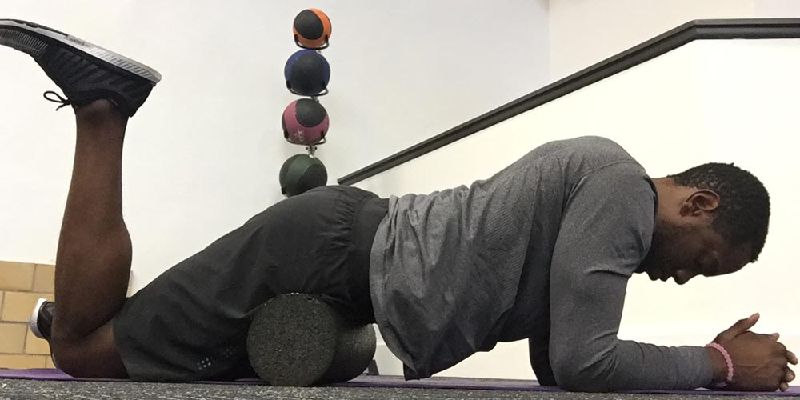Just a few years ago, foam rollers were something only professional athletes and trainers used. Now, you can find foam rollers in gyms, physical therapy offices and even living rooms (which is precisely where mine is sitting right now). Self myofascial release, more commonly referred to as foam rolling, has gained great popularity over the years, thanks in part to the popularity of higher intensity workouts and the easy accessibility of foam rollers.
Everyone from the professional athlete to the average gym-goer is using some variety of a foam roller these days in hopes of speeding up the recovery of stiff muscles or to work out the knots they may have. While it is great that the foam rolling trend is finally catching on and people are giving their muscles some love after a tough workout, it’s important to make sure it is being done right.
While it may seem simple enough- just lay on it and roll over your muscles- there are a couple very common mistakes people make when foam rolling that can actually further aggravate an injury or increase inflammation.
Here’s what you need to know.
Self Myofascial Release
 Sounds fancy, huh? Well, it kinda is, but it’s not nearly as complicated as it sounds. Fascia is the connective tissue that surrounds your muscles. When overworked, the fascia can shorten, sometimes so much that it causes soreness or trigger points throughout the body. When fascia becomes restricted, it can cause soreness, movement restrictions and can even lead to injuries.
Sounds fancy, huh? Well, it kinda is, but it’s not nearly as complicated as it sounds. Fascia is the connective tissue that surrounds your muscles. When overworked, the fascia can shorten, sometimes so much that it causes soreness or trigger points throughout the body. When fascia becomes restricted, it can cause soreness, movement restrictions and can even lead to injuries.
Self myofascial release , or foam rolling, in its most basic sense, is using your own body weight to apply pressure to specific points on your body in an effort to release muscle tension.
| Benefits of Foam Rolling |
|---|
| Corrects muscle imbalances |
| Relieves muscle soreness |
| Improves range of motion |
| Prevents injury |
| Improves recovery time |
| Breaks up scar tissue |
DON’T: Foam Rolling Directly on Injured Area
If you have a recent injury, foam rolling directly on it could further irritate it and cause greater inflammation. Instead, you actually want to work the surrounding areas. You want to slowly work your way away from the injury point. Once you’ve worked that thoroughly, you can begin to work your way back towards the injured area, being sure to be gentle (perhaps not applying your full bodyweight to the foam roller).
DON’T: Moving Too Quickly
Foam rolling is uncomfortable- sometimes even painful. But this isn’t an excuse to rush through it. By rolling too quickly, you will not allow the muscles to relax and will not achieve the relief you are looking for. You will actually increase your chances of further inflaming your muscles.
DO: Incorporate Proper Foam Rolling Into Your Regular Exercise Routine
To properly foam roll, you should aim to cover no more than one inch of muscle per second. When you do find areas of tightness, you want to pause, lingering on the spot for up to 30 seconds. This will allow enough time for the muscle to actually release and the pain to reduce.  If it is too painful to hold on that spot, then simply focus on the areas surrounding instead, as discussed above.
If it is too painful to hold on that spot, then simply focus on the areas surrounding instead, as discussed above.
You can also use a tennis ball, lacrosse ball or Theracane. A tennis ball or lacrosse ball are great for working the lower back and the chest.
Foam rolling should be a regular part of your workout routine. Tight muscles lead to injuries, which is why stretching and foam rolling should be considered just as important as the actual workout itself. Without them, injury is inevitable and your workouts will suffer greatly.
Aim to foam roll just after your workout, but if you are too fatigued, you can always go back to it a little later in the day when you feel up to it. Remember to take your time working through the muscles, giving them time to actually relax. It may be a bit painful at first, but your body will thank you the next morning.





No Comments